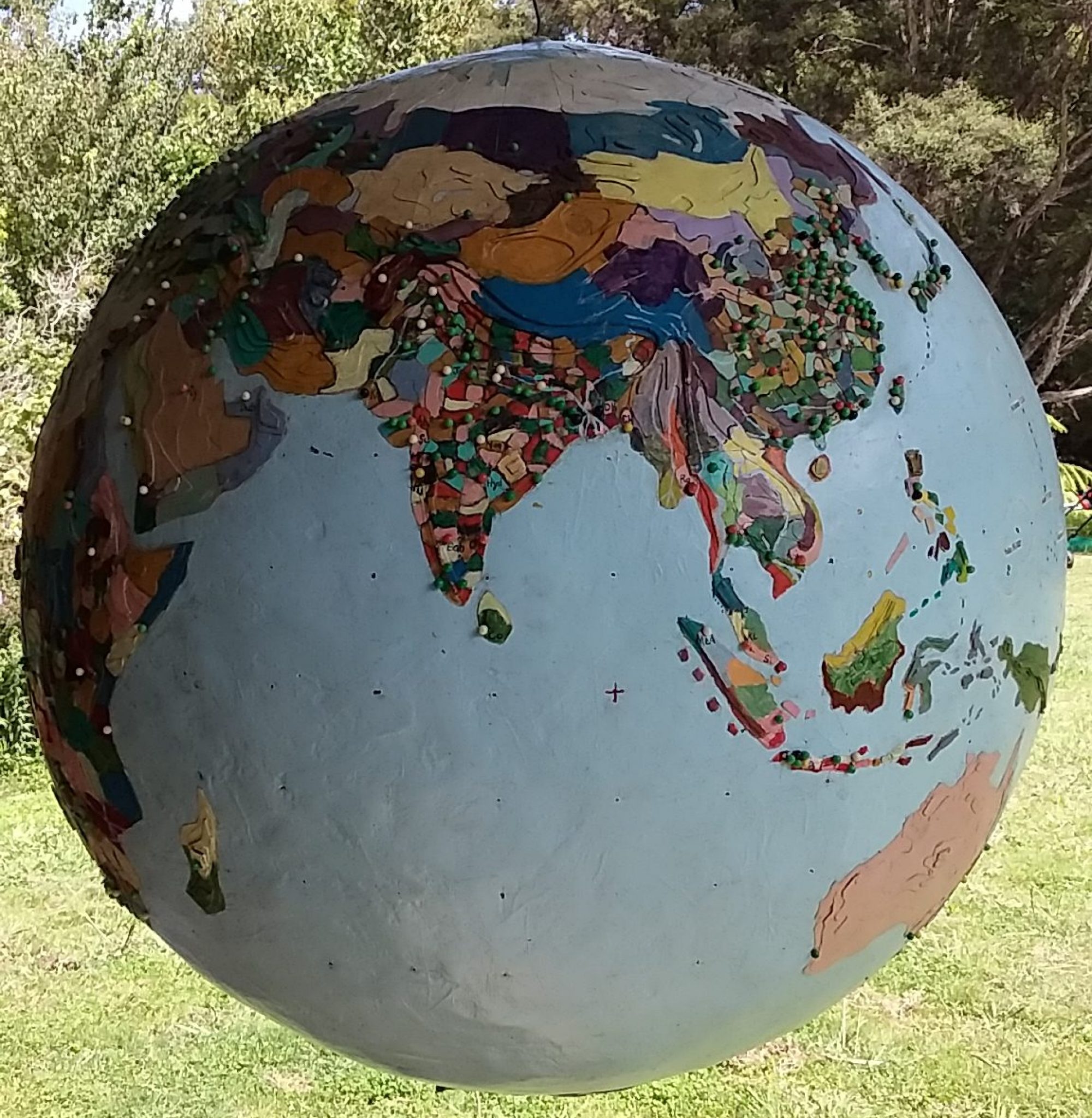In 1997, before I’d invented the millisphere model for unpacking human geography, I’d traveled to the millisphere of “Gold Coast” (the eastern watershed of Australia north of Canberra). Technically The Gold Coast (GC) is the tourist strip of beach-side apartments, malls and theme parks south of Brisbane and north of Sydney but I get to name millispheres and sunshine and beaches seemed an appropriate image.
 The first view from a passenger jet records Australia as a brown line on the horizon; and blue cross hatching the Tasman Sea below. I remember feelings of anticipation and excitement. Australia and New Zealand have a shared history; the ANZACs fought together for the British Empire a century ago. Brothers-in-arms in the 20th century we are now like distant cousins, drifting apart since 2001.
The first view from a passenger jet records Australia as a brown line on the horizon; and blue cross hatching the Tasman Sea below. I remember feelings of anticipation and excitement. Australia and New Zealand have a shared history; the ANZACs fought together for the British Empire a century ago. Brothers-in-arms in the 20th century we are now like distant cousins, drifting apart since 2001.
 The statue of Captain Cook in Sydney’s Hyde Park has him “born at Marton Yorkshire 1728”. The small town next door to where we live in New Zealand is also named after Cook’s hometown. In Hyde Park, Cook stands next to an Australian Araucaria conifer, a Bunya Bunya pine; an Australian ibis, like a grubby white fowl with a long beak, searched for picnic leftovers at his feet. In 1770 Cook called terra australis “New South Wales”, nullifying the Dutch “New Holland”, and claimed it for the British Crown.
The statue of Captain Cook in Sydney’s Hyde Park has him “born at Marton Yorkshire 1728”. The small town next door to where we live in New Zealand is also named after Cook’s hometown. In Hyde Park, Cook stands next to an Australian Araucaria conifer, a Bunya Bunya pine; an Australian ibis, like a grubby white fowl with a long beak, searched for picnic leftovers at his feet. In 1770 Cook called terra australis “New South Wales”, nullifying the Dutch “New Holland”, and claimed it for the British Crown.
Across the busy street is the museum where I met my first Aborigine. He’d come thousands of miles from the Kimberley Ranges to meet with government officials, he said, but he knew about the “Pakaitore occupation” in Whanganui, my hometown, where local Maori, the indigenous people of New Zealand, in 1995, had occupied a park to draw attention to their land claim. I realised both that I was a foreigner in his land and that race relations were different on the other side of the Tasman.
A pencil sketch records the curves of the Harbour Bridge and Opera House with my travel companion in the foreground sunbathing. She is the better artist and the one who wanted to go to “Aussie”. There is a photo of us, two decades younger, outside Brett Whiteley’s Studio. Next to a sign which reads “Endlessnessism!”, we are standing by two three-metre matches – one burnt out. Whiteley (1939-93) had died of a heroin overdose.
At his studio the late painter described a Zen landscape painting technique he used (via video); to sit and meditate for several hours on a view and then to move inside and paint it. At Toowoomba, in the Blue Mountains, I decided to give it a go. On the plateau edge I watched the red sun set over OZ to the west; slowly my eyes became accustomed to the dark and I could make out, dimly in the distance, here and there, bushfires. In the dark, in the bushes nearby, something started rustling and I thought of snakes.
The trip to Aussie in 1997 seemed like a luxury at the time. All that hard earned money spent on just going to have a look at another country, on being a tourist.
When writing up a millisphere I like to have been there or at least talk with someone who has. Arrogant as it is summarize seven million people’ s lives, and what it is like where the live, the project of mapping the millispheres is part selective fact, part subjective impressions.
In Gold Coast I was a foreigner in a country bigger than my own; where my New Zealand accent was considered cute; where there is a city that was bigger and wealthier than any I’d seen before.
Another sketchbook recorded a quick stopover in Brisbane on the way to Saigon. Flying over Australia on the way Asia you see how vast and dry it is.
One impression which stands out from my first visit to Gold Coast is a glimpse of the Sydney suburb of Redfern from a train heading for the Blue Mountains. Suddenly I was looking at an Aboriginal suburb looting like small patch of the third world in first world Sydney. Another impression was of a group of drunk Aboriginal men and women, in middle of a sunny day, in a mall in Brisbane, oblivious to needs of the capitalist city – soon the police arrived.


